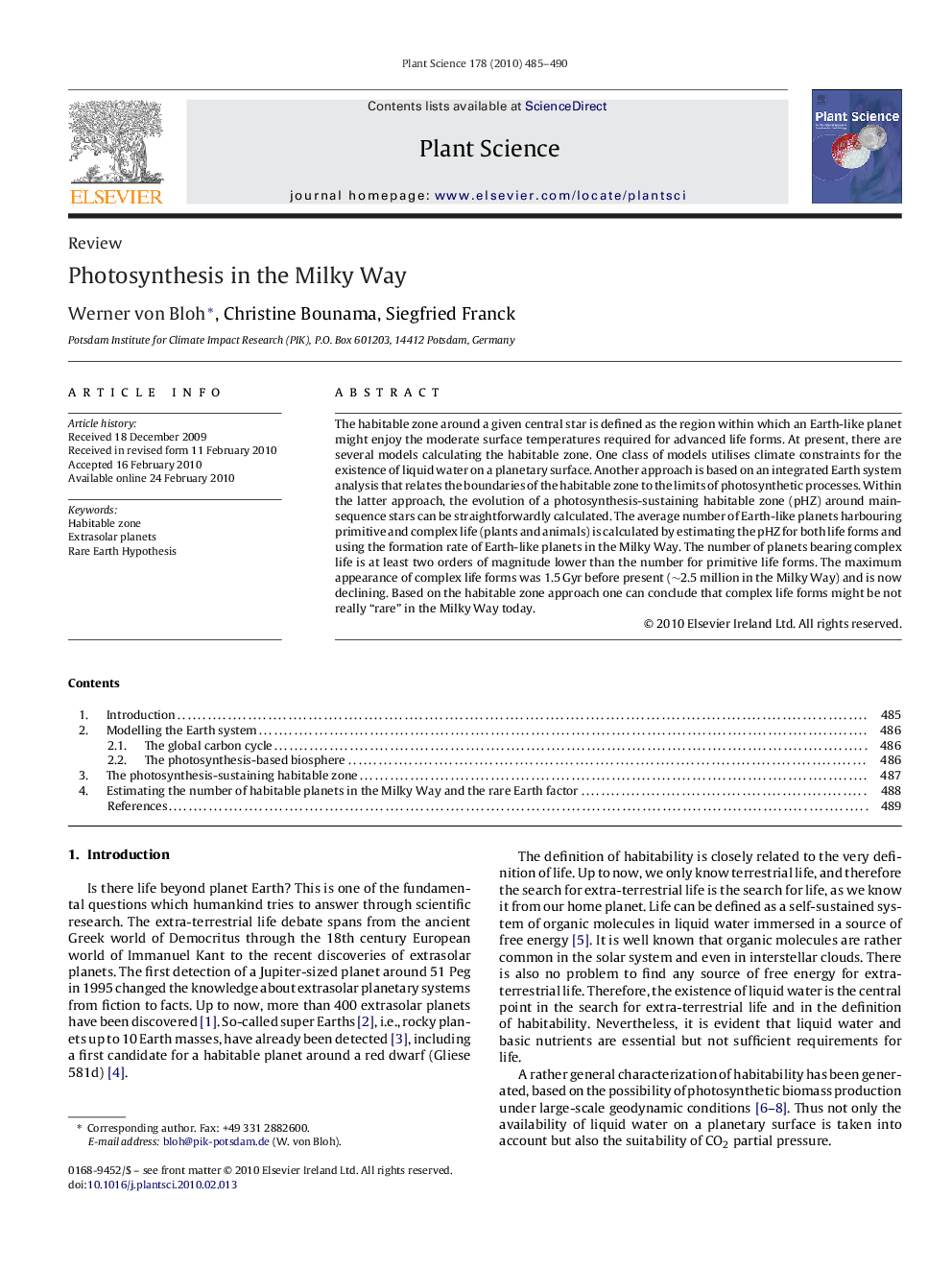| Article ID | Journal | Published Year | Pages | File Type |
|---|---|---|---|---|
| 2017897 | Plant Science | 2010 | 6 Pages |
The habitable zone around a given central star is defined as the region within which an Earth-like planet might enjoy the moderate surface temperatures required for advanced life forms. At present, there are several models calculating the habitable zone. One class of models utilises climate constraints for the existence of liquid water on a planetary surface. Another approach is based on an integrated Earth system analysis that relates the boundaries of the habitable zone to the limits of photosynthetic processes. Within the latter approach, the evolution of a photosynthesis-sustaining habitable zone (pHZ) around main-sequence stars can be straightforwardly calculated. The average number of Earth-like planets harbouring primitive and complex life (plants and animals) is calculated by estimating the pHZ for both life forms and using the formation rate of Earth-like planets in the Milky Way. The number of planets bearing complex life is at least two orders of magnitude lower than the number for primitive life forms. The maximum appearance of complex life forms was 1.5 Gyr before present (∼∼2.5 million in the Milky Way) and is now declining. Based on the habitable zone approach one can conclude that complex life forms might be not really “rare” in the Milky Way today.
